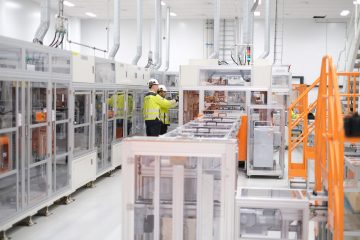technologyreview.comby Casey Crownhart
We’re entering the era of the heat pump.
The concept behind heat pumps is simple: powered by electricity, they move heat around to either cool or heat buildings. It’s not a new idea—they were invented in the 1850s and have been used in homes since the 1960s. But all of a sudden, they’ve become the hottest home appliance, shoved into the spotlight by the potential for cost savings and climate benefits, as well as by recent policy incentives.
The hero in a heat pump is the refrigerant: a fluid that moves in a circuit, soaking up and releasing heat as it goes. Electricity powers the system, pushing the refrigerant around the cycle.
As the refrigerant moves through the heat pump, it’s compressed and expanded, switching between liquid and gas forms to allow it to gather and release heat at different points in the cycle. (If this is enough detail for you, feel free to skip to the next question. Otherwise, join me on a journey inside a heat pump to understand how this all works.)
In the first stage of its trek, the refrigerant flows through a heat exchanger, past that outside air and warms up enough to start boiling, changing from a liquid to a gas.
The second phase of its journey is a trip through the compressor. The compressor squeezes the refrigerant into a smaller volume, increasing its pressure and boiling point (this will become important in a minute). This also warms it further, so by the time the refrigerant is past the compressor, it’s warmer than the room indoors.
The third leg of the refrigerant’s journey takes it through another heat exchanger. But by now, the refrigerant is a warm gas, above 100 °F, and it’s flowing past a relatively colder room. As it transfers some of that heat into the room with the help of a fan, it starts turning back into a liquid.
Finally, in the fourth stage, the liquid refrigerant will go through an expansion valve, releasing the pressure. Just as squeezing a material heats it up, expanding it allows it to cool down again, so now the liquid is back to a low temperature and ready to absorb more heat to bring inside.
There are heat pumps running everywhere from Alaska to Maine in the US. And about 60% of buildings in Norway are heated with heat pumps, along with 40% in Sweden and Finland.
Today, a mixture of chemicals referred to as R-410A is one of the most widely used refrigerants in heat pumps. In addition to being slightly less harmful for the ozone layer, R-410A has a lower boiling point than R-22, meaning it can absorb more heat at lower temperatures, boosting efficiency in the cold.
Other components have improved as well. New compressors used in heat pumps today can get refrigerants to higher pressures using less power. There are also new so-called variable-speed compressors that allow heat pumps to ramp their power up and down. Finally, the heat exchangers that transfer heat between the air and the refrigerant are getting bigger and better, so they can move heat around more effectively.
Heat pumps’ real climate superpower is their efficiency. Heat pumps today can reach 300% to 400% efficiency or even higher, meaning they’re putting out three to four times as much energy in the form of heat as they’re using in electricity. For a space heater, the theoretical maximum would be 100% efficiency, and the best models today reach around 95% efficiency.
Up-front costs for heat pumps are a major barrier to adoption: purchasing and installing a single unit today can cost between $3,000 and $6,000, and larger homes often require multiple units.
In the US, the Inflation Reduction Act offers a 30% tax credit on the purchase price of a heat pump, with additional rebates for low- and moderate-income households. For some households, the funding could cover 100% of the cost. Rewiring America has a calculator to help people determine what IRA subsidies they qualify for.
New designs, like self-contained window units from startup Gradient, could cut down on installation costs. Other companies, like Midea and LG, have also started offering small, portable units. These new options could allow heat pumps to break into new spaces, like older apartment buildings where installation might otherwise be expensive or impossible.
Global heat pump sales grew by 15% in 2021. Europe has seen some of the quickest growth, with 35% sales growth in 2021, a trend that’s likely to continue because of the energy crisis. North America still has the largest number of homes with heat pumps installed today.



0 Comments